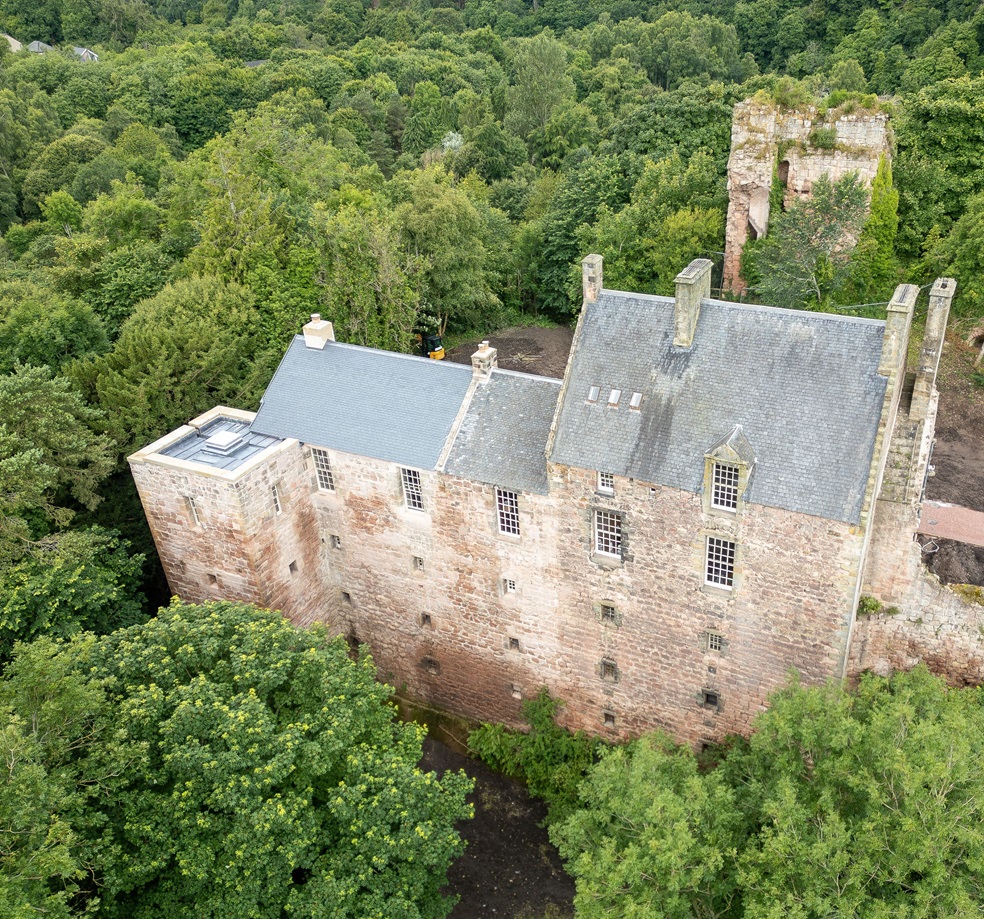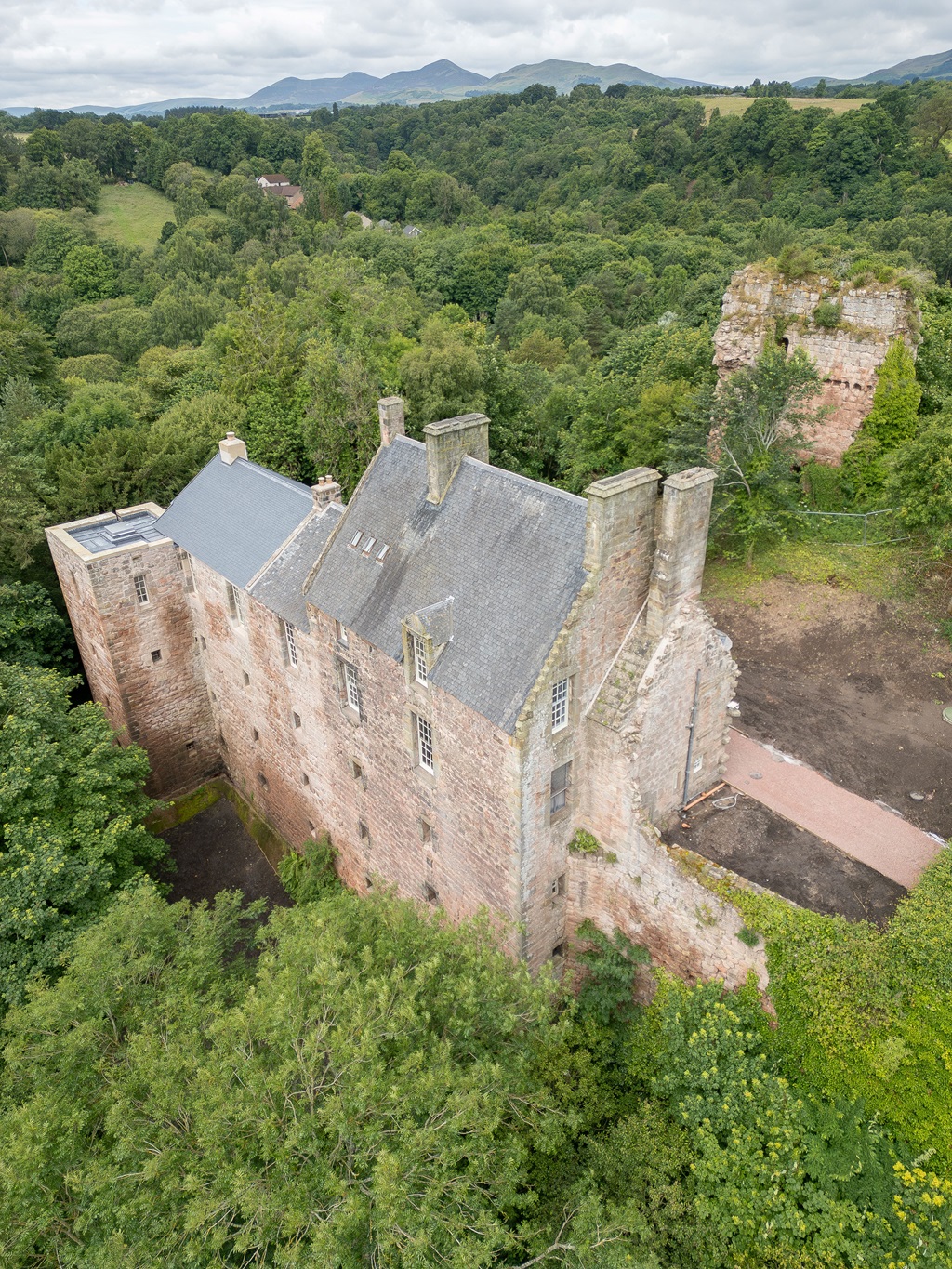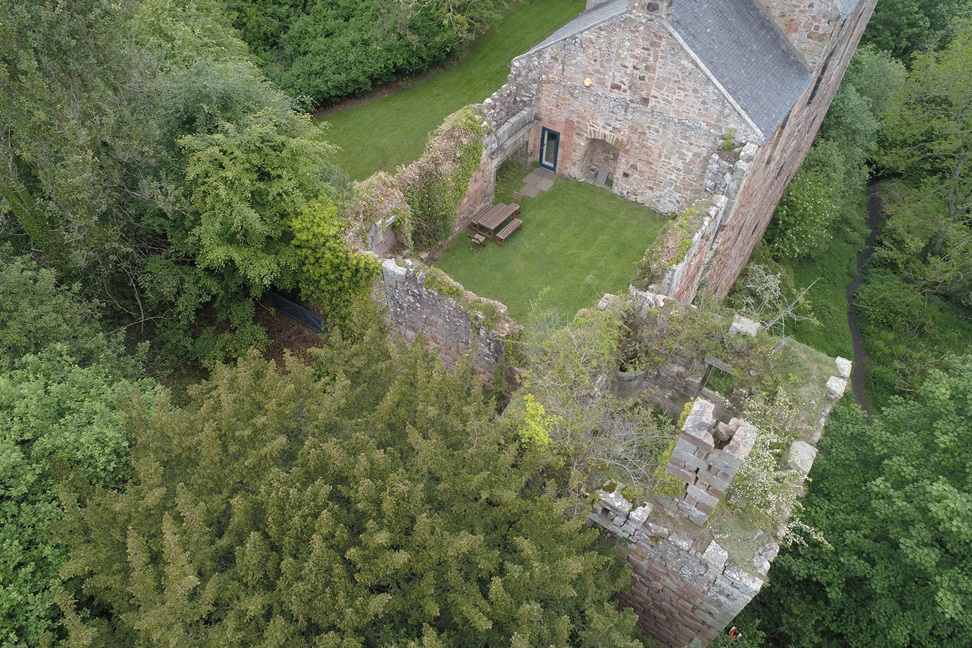Air source heat pumps adopted at Rosslyn Castle

Rosslyn Castle's East Range (Image credit: K Neville)
A major ‘once in a generation’ programme of restoration and repair at Rosslyn Castle, one of Midlothian’s most important historic buildings, has now been completed.
The ambitious £4 million project to reroof the Great Hall and Tower, to conserve and consolidate the Castle’s stonework and to develop a sustainable heating strategy has been entirely self-funded by the Rosslyn Chapel Trust.
For the first time since 1650, Rosslyn Castle’s East Range now has a permanent roof over the Great Hall and Tower, protecting important masonry carvings and the three levels of vaults below ground level. The entire building is also now net zero ready, with heating and hot water provided by six air source heat pumps, removing the need for traditional fossil fuels. The heat pumps are situated in the Castle’s 16th-century vaults, and the engineers believe that Rosslyn Castle may be the oldest building in the world to be using this sustainable, low carbon technology.
Like the world-famous Rosslyn Chapel, Rosslyn Castle was built by the St Clair family, who first came to Scotland in the 11th century. Although much of the Castle site is ruinous, part of the East Range, completed in 1622, has been let as holiday accommodation since it was restored by The Earl and Countess of Rosslyn in the 1980s. The Great Hall and Tower were partially destroyed in 1650 when Cromwell’s troops attacked the building, but both have now been sympathetically restored and reroofed, using local and traditional skills and materials, and these spaces are being brought back into use to transform the experience for guests staying there.
Rosslyn Castle is category A-listed, recognising its architectural and historic character and its grounds are designated as a Scheduled Monument. The Castle is in the care of Rosslyn Chapel Trust, which has managed and solely funded the two-year project.

Rosslyn Castle's East Range (Image credit: K Neville)
The Earl and Countess of Rosslyn remain closely involved with the estate as Trustees of Rosslyn Chapel Trust and said: “Having seen Rosslyn Chapel flourish since its recent conservation programme, we were determined likewise to secure the future of its neighbour, Rosslyn Castle.
“Our vision was to conserve the Great Hall and Tower and protect the vaults below, whilst maintaining the historic character of a building which has been widely loved for centuries. We are delighted with the result and most grateful to all those who have contributed to the project over the last two years, the majority of whom are locally based.”
The East Range provides self-catering accommodation throughout the year, in a partnership with The Landmark Trust. It now provides accommodation for eight people.
Rosslyn Chapel Trust commissioned Page\Park as architects to oversee the work.
Jonathan Walsh, of Page\Park, said: “Page\Park are delighted to have been involved in such a unique and historic project, providing a rare opportunity to reintegrate a ruinous part of the Castle into the habitable house that will help safeguard its future.
“As a reuse practice, we revel in the opportunity to combine our conservation expertise with transformative change in such challenging historic settings. We are proud of our role in supporting Rosslyn Chapel Trust in their vision to preserve the internationally significant precinct of buildings, providing extensive cultural and environmental benefits for future generations.”

Ruined Great Hall and Tower before restoration work (Image credit: Rosslyn Chapel Trust)
Bonnyrigg-based construction company John Dennis & Company (Scotland) Ltd was the main contractor for the work.
Stewart Cairney, managing director of John Dennis & Company (Scotland) Ltd, said: “As a local company John Dennis & Company (Scotland) Ltd were delighted to be awarded the contract for the restoration and refurbishment works at Rosslyn Castle.
“Whilst the historic building has presented the team with a number of challenges, it has also been very rewarding to have been able to work in such a collaborative manner with Rosslyn Chapel Trust and the design team to overcome these challenges in order to refurbish the existing occupied rooms and restore the Great Hall and Tower. We are extremely proud of the quality of the completed project and we are confident that it will be well received and enjoyed by all who stay here in the coming years.”
James Cameron, associate director of engineering consultancy Harley Haddow, said: “The heat source has been chosen for its excellent sustainability and renewable energy credentials, allowing Rosslyn Castle’s East Range to be net zero ready and removing the need for traditional fossil fuel supplies such as oil or gas. All the heating and hot water is now provided by six air source heat pumps located within Castle vaults. We believe that Rosslyn Castle may be the oldest building in the world to have adopted air source heat pumps as a sustainable, low carbon technology of the future.”
Rosslyn Chapel Trust was established in 1995 by The Earl of Rosslyn. Since then, it has undertaken a 17-year programme of conservation at Rosslyn Chapel, concluded in 2014, built an award-winning new visitor centre and, in 2018, completed a two-year programme of conservation and repair at Collegehill House, the former 17th century inn which stands at the entrance to the Chapel. Last year 154,912 people visited Rosslyn Chapel compared to just 9,873 when the Trust was established.
Ian Gardner, director of Rosslyn Chapel Trust, said: “We are delighted to see this major and innovative project reach its conclusion. This ‘once in a generation’ work will help to conserve the East Range of Rosslyn Castle for future generations to appreciate and will absolutely transform the quality of the experience for guests staying here. We are extremely grateful for such skilful work from the contractors and sub-contractors and there is no doubt that this pioneering project will secure the long-term future of one of Midlothian’s most historically significant buildings.”





















